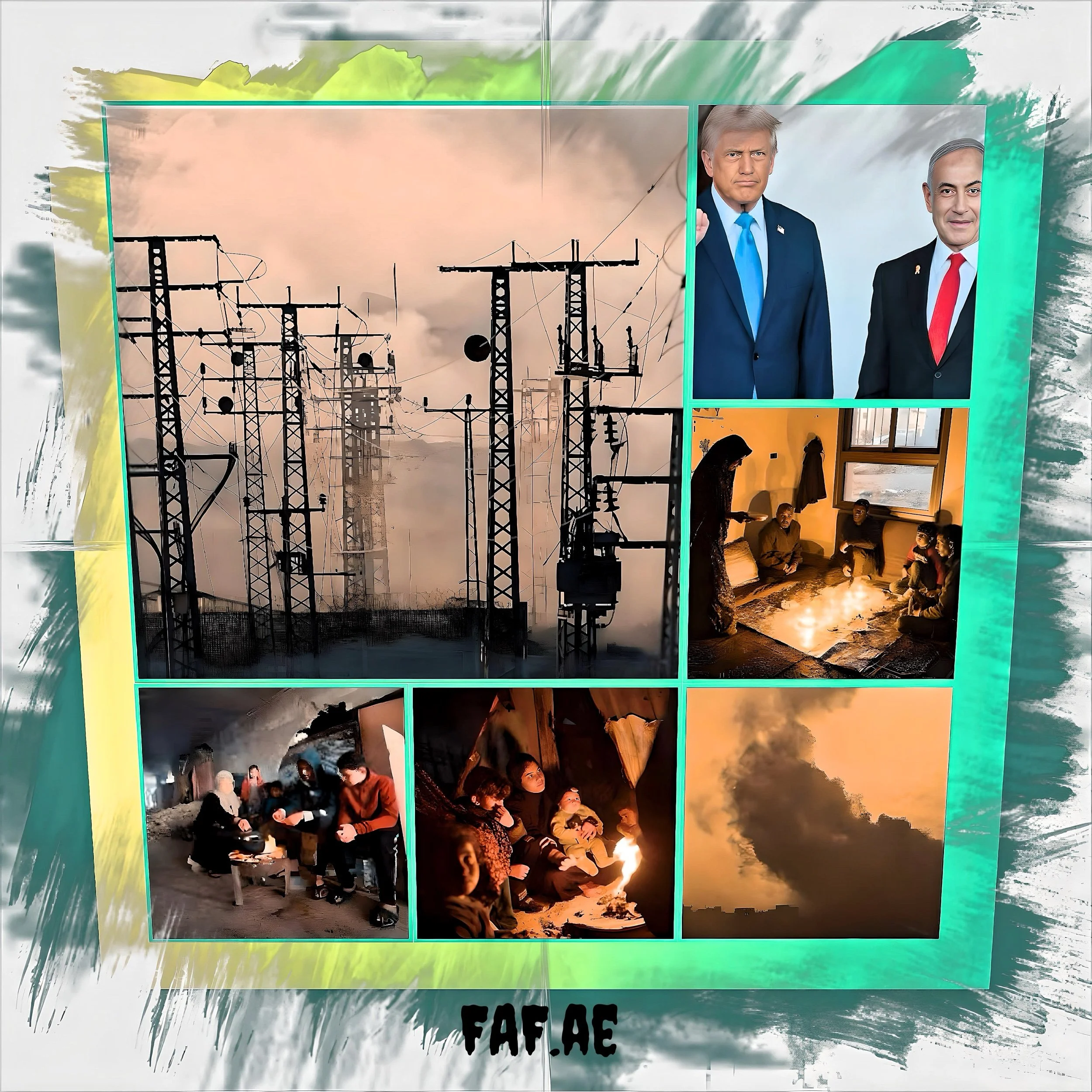America’s Crossroads: Assessing the Case For and Against Donald Trump’s Leadership in 2025
Introduction
As the United States navigates a period of profound political and social transformation under President Donald Trump’s second term, the debate over his necessity hinges on competing visions of governance, economic policy, and America’s global role.
While supporters laud his aggressive deregulation, border enforcement, and rejection of “globalist” alliances, critics warn of democratic erosion, economic volatility, and diplomatic isolation.
FAF reviews from polling, policy analyses, and expert assessments to evaluate the arguments for and against Trump’s leadership at this juncture in American history.
Executive Power and Governance
Centralization vs. Democratic Norms
Expansion of Presidential Authority
Trump’s administration has accelerated efforts to consolidate executive power, drawing heavily on the Heritage Foundation's Project 2025 blueprint.
This initiative seeks to dismantle bureaucratic independence across federal agencies, replacing career civil servants with political appointees loyal to the president.
For instance, the Department of Justice and FBI have undergone sweeping leadership changes to align with Trump’s agenda, including prosecutorial priorities targeting diversity initiatives and prioritizing cases against “anti-white racism.”
Proponents argue this realignment corrects perceived liberal biases, while critics like Cornell political scientist Rachel Beatty Riedl warn it mirrors democratic backsliding seen in Hungary and Russia.
The administration’s reliance on unitary executive theory—a legal framework asserting presidential control over the entire executive branch—has enabled rapid policy shifts without congressional approval.
Examples include Trump’s deployment of the National Guard to the southern border and his invocation of emergency powers to fast-track energy projects.
Supporters view this as necessary to bypass gridlock, but legal scholars caution it undermines checks and balances.
A February 2025 Economist/YouGov poll found 49% of Americans believe Trump “wants to be king,” with only 26% saying he respects democratic institutions.
Workforce Reduction and Privatization
Over 100,000 federal jobs have been eliminated since January 2025, with Elon Musk’s Department of Government Efficiency (DOGE) spearheading cuts through automation and outsourcing.
While Republicans frame this as cost-saving (63% approve), Democrats warn of eroded services: 52% fear the loss of essential workers, and 48% believe it consolidates Trump’s power.
DOGE’s access to citizen data has also raised bipartisan concerns, with 63% of respondents in a CBS poll worried about privacy breaches.
Economic Policy: Growth vs. Stability
Tariffs and Trade Wars
Trump’s reinstatement of tariffs on Canada, Mexico, and China—averaging 15% on $300 billion in imports—has polarized economists. The administration claims these measures protect manufacturing, but the Atlanta Federal Reserve projects a 2.4% GDP contraction in Q1 2025, the steepest decline since 2020.
While Commerce Secretary Howard Lutnick dismisses recession risks, Goldman Sachs estimates a 20% chance of a downturn within 12 months. Small businesses report material cost increases, and 41% of manufacturers delay expansions due to uncertainty.
Tax Reform and Inequality
Aligned with Project 2025, Trump advocates a 15% corporate tax rate (down from 21%) and a 30% flat income tax.
Analysts estimate this would disproportionately benefit the top 1%, who would see a 9% after-tax income boost, compared to 1.5% for the middle class.
The proposed elimination of tips and overtime wages taxes enjoys broader support (58% approval in CBS polling), but critics argue it could enable tax avoidance by high earners reclassifying income.
Energy Dominance and Climate Rollbacks
The administration’s energy policies—scrapping climate regulations, fast-tracking fossil fuel permits, and defunding renewable subsidies—have boosted oil production to 13.2 million barrels per day, a record high.
However, repealing the Inflation Reduction Act clean energy incentives has halted $47 billion in solar and wind investments, with 31,000 jobs lost in February 2025 alone.
Foreign Policy: Realignment and Risks
NATO and Transatlantic Relations
Trump’s threats to withdraw from NATO have fractured alliances unless members increase defense spending.
After Germany and France refused demands to meet a 3% GDP target, the U.S. suspended joint military exercises, prompting Russia to conduct drills near Poland’s border.
Berkeley scholar M. Steven Fish argues this emboldens autocrats: “Trump is creating a post-American world where might make right.” Conversely, 44% of Republicans support the stance, believing Europe is free of U.S. security.
China and Trade
The administration’s ban on semiconductor exports to China has escalated tensions, leading Beijing to restrict rare earth mineral exports critical for electric vehicles.
While DOGE claims this will restore 250,000 tech jobs by 2026, the Semiconductor Industry Association warns of an $80 billion revenue loss this year.
Social Policies: Polarization and Rights
Immigration and Deportations
Trump’s deportation force—a coalition of ICE, FBI, and National Guard units—has removed 215,000 undocumented immigrants since January, focusing on “sanctuary cities” like New York and Los Angeles.
A Washington Post poll found that 51% support mass deportations, but 56% oppose ending birthright citizenship, a key Trump proposal.
The policy’s economic impact is contested: agriculture sectors report labor shortages, while construction wages have risen 8% due to reduced competition.
Abortion and LGBTQ+ Rights
Despite Trump’s claim that abortion should be a state issue, Project 2025-aligned officials are pushing federal restrictions.
The DOJ has threatened lawsuits against states allowing abortion medication by mail, and the Department of Health and Human Services revoked LGBTQ+ healthcare protections under Section 1557.
These moves energize the conservative base but risk alienating moderates—13% of Trump’s 2024 voters oppose ending birthright citizenship, and 11% disapprove of Musk’s influence.
Public Opinion: A Nation Divided
Approval and Priorities
Trump’s approval rating stands at 47.9%, down from 51.5% at the inauguration, with disapproval at 47.2%. While 76% of Republicans believe he’s improving governance, 78% of Democrats say he’s damaging it.
The starkest divide surrounds priorities: 68% want inflation addressed, but only 39% believe Trump is focused on it, compared to 61% who say he prioritizes immigration.
Trust in Institutions
Confidence in the Supreme Court has fallen to 40%, a 15-point drop since 2024, following rulings upholding Trump’s tariff authority and limiting federal regulatory power.
Meanwhile, 57% of Americans, including 37% of Republicans, worry about DOGE’s data access.
Conclusion: Necessity or Risk?
The case for Trump hinges on his unapologetic disruption of entrenched systems—whether dismantling bureaucratic “deep states,” reshoring industries, or rejecting multilateralism.
For supporters, this represents a corrective to decades of globalist and progressive overreach.
However, the risks are profound: economic instability from trade wars, democratic erosion via centralized power, and global isolation that cedes influence to rivals like China and Russia.
Ultimately, America’s need for Trump depends on whether citizens prioritize short-term nationalist wins over long-term institutional and international stability.
The Brookings Institution notes that Trump’s base-first strategy has consolidated opposition rather than broadened support.
With 84% rejecting the idea of Trump as “king,” the electorate’s tolerance for radical change may hinge on economic outcomes in the coming months.
The nation stands at a crossroads between transformation and turmoil, with Trump’s policies testing the resilience of both markets and democracy.






